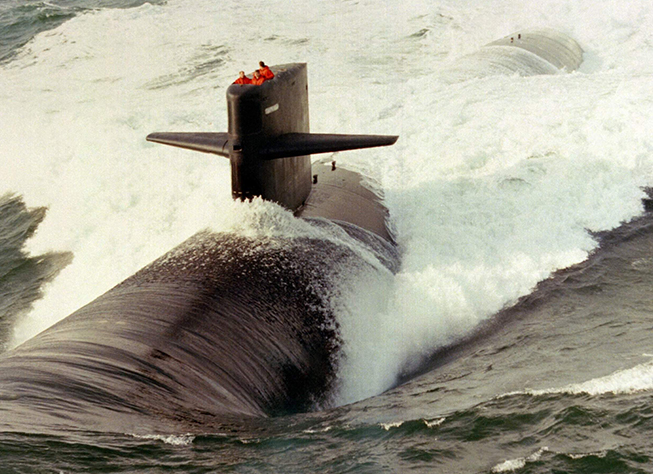Building on earlier joint efforts, the U.S. Navy and DARPA initiated a new joint program in 1978 with the objective of achieving a laser communications link between aircraft, space platforms or mirrors, and submerged submarines.
The ground-based laser-space mirror part of this effort built largely on DARPA efforts toward high-powered, gas-phase excimer lasers (that could emit in the shorter, more water-penetrating region of the electromagnetic spectrum) that had led to the demonstration of a workable, moderate power, laser-optical receiver combination. Additional DARPA work on compensating for atmospheric effects on laser propagation fed into this project and were transferred to the Strategic Defense Initiative (SDI).
The project yielded an efficient laser-receiver and a narrowband, matched-wavelength excimer-Raman converter laser system, which was used in successful demonstrations in 1988 of aircraft-to-submerged-submarine communication in 1988, after transfer of the Submarine Laser Communications-Satellite (SLCSAT) program to the Navy in 1987. Soon after, however, the Navy and DARPA agreed that the risks and expenses in developing new solid-state for the blue-green lasers would perhaps be more acceptable than those associated with going ahead with the gas-excimer laser systems in space.
Excimer lasers would expand into medical arenas, especially for corrective eye surgery.
